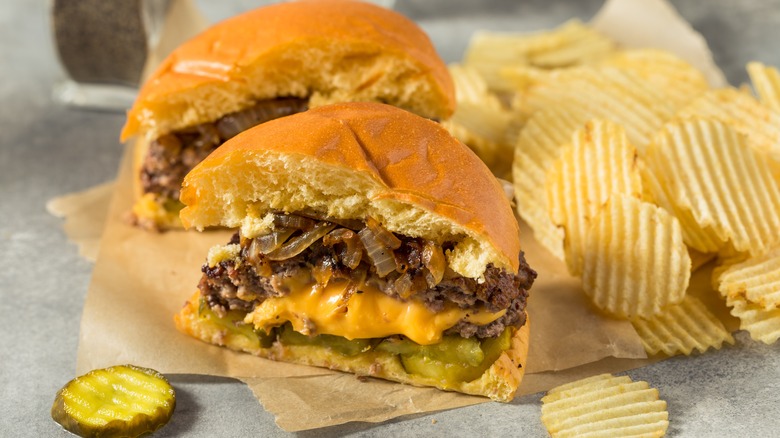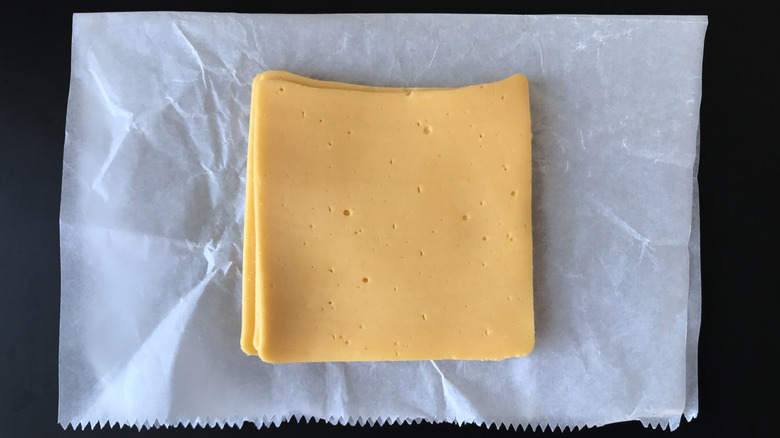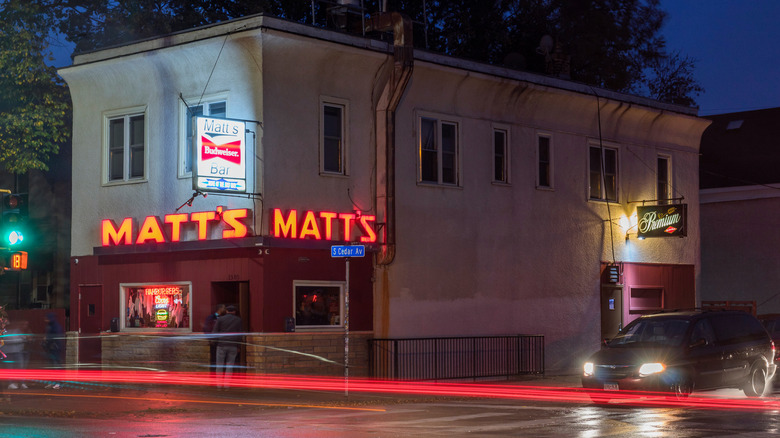The Only Cheese You Should Use For Homemade Juicy Lucy Burgers
As befits a region of the U.S. that's home to a great deal of cows, the Midwest has made several vital contributions to our national hamburger culture. In Michigan, a retro fast food chain may have inspired the square burgers served at Wendy's. Neighboring Wisconsin gave us the butter burger, now available nationwide thanks to Culver's. The next state over from that, Minnesota, also serves up a delicious regional cheeseburger variation: the Juicy Lucy.
What makes the Juicy Lucy special? Rather than being served on top of or in between hamburger patties, the cheese in Juicy Lucy burgers is fully sealed inside the meat before it's cooked, yielding a burger that oozes molten goodness when you bite into it. The novelty of this clever burger has inspired yet further innovation — for example, some diners drizzle that melty cheese over the fries they've ordered with their burger. And while other variations on the basic formula have emerged since the Juicy Lucy's invention in the 20th century, traditionalists know that one cheese reigns supreme in this most American creation: That would be, of course, American cheese, which has melting qualities that exceed all others. It's also as easily available at grocery stores as any other cheese, meaning that this burger is super straightforward to assemble — if you've read the above description, you basically know the drill.
Melty American cheese makes the best Juicy Lucy
Though many restaurants that serve the Juicy Lucy today offer various options, the classic cheese here is considered to be American. For a burger whose cheese-meltiness is its chief selling point, this is only natural: American cheese is unparalleled in its meltability. That's partially because it isn't technically a cheese, i.e., it isn't made by separating curds from whey. American is actually made by combining other cheeses — cheddar, Colby, etc. — with an emulsifying agent. This came about as a way of minimizing waste, but it also happened to create a product that melts spectacularly — that crucial emulsifier ensures a cheese that stays velvety and doesn't separate when it's heated.
Thus developed American cheese's status as the go-to for grilled cheese sandwiches, cheeseburgers, mac and cheese — and, yes, Juicy Lucys. Making one at home? Once you're stocked up on cheese, meat, and fixings (see our tips for the best way to put toppings on a burger), the process isn't difficult. For each burger, form two thin patties, and pile a slice or two of American cheese in the center of one. Top with the other patty and pinch the edges to seal it so the oozing cheese doesn't escape during cooking. Then grill or griddle as usual. Just remember one more crucial tip that all Juicy Lucy connoisseurs know: Given the lava-like nature of what's inside, you'll want to let this one cool a bit before biting into it.
The long-debated backstory of the Juicy Lucy
There's plenty to love about a hamburger stuffed with molten cheese, but that doesn't mean the Juicy Lucy has escaped controversy. In Minneapolis, debate still rages over whether it was created at Matt's Bar or the 5-8 Club, both of which claim credit. Matt's, however, might have a slight edge. Among other things, it offers a creation story: One day in 1954, a customer reportedly came in and specified that he wanted a burger with cheese inside the patties instead of outside. The story goes that when he bit into it, he announced with pleasure, "That's one juicy Lucy!" You may, by the way, come across the name of this burger styled as "Jucy Lucy" — that's because Matt's spells it that way.
Matt's claim to the Ju(i)cy Lucy got a further boost in 2014, when Barack Obama visited the area. Desiring to sample a local delicacy, the president indirectly weighed in on the long-running argument — which is to say, he got his burger at Matt's. Still, it's not as though diners are harmed by the profusion of restaurants that serve a cheese-stuffed burger, and home cooks benefit from the fact that the Juicy Lucy is super simple to make. You just have to make sure you're using the right cheese for the job.


